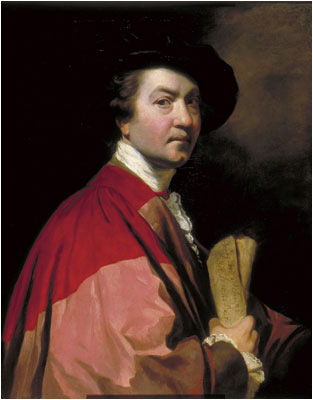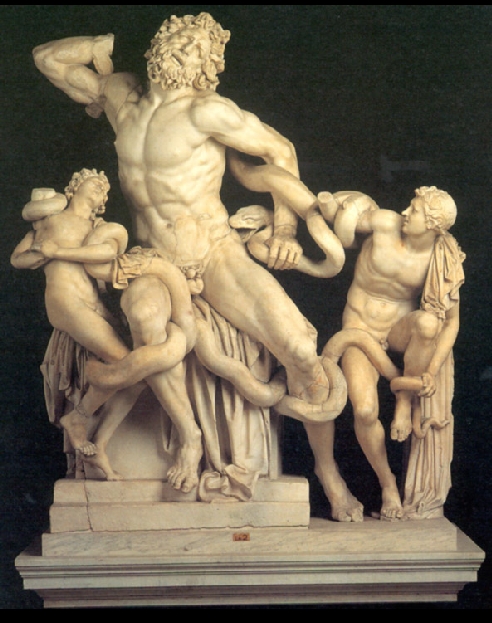Joshua Reynolds, Seven Discourses on Art
| The passages below from Reynolds Discourses represent one of the most complete expression of the ideals and assumptions of classicism in art. While the opinions expressed by an English artist in the mid-eighteenth century are not identical to those held by most members of the French academy a century later, the general position of both are very similar. |
On whom, then, can [the young artist]rely, or who shall show him the path that leads to excellence? The answer is obvious: Those great masters who have travelled the same road with success are the most likely to conduct others. The works of those who have stood the test of ages have a claim to that respect and veneration to which no modern can pretend. The duration and stability of their fame is sufficient to evince that it has not been suspended upon the slender thread of fashion and caprice, but bound to the human heart by every tie of sympathetic approbation.
There is no danger of studying too much the works of those great men, but how they may be studied to advantage is an inquiry of great importance. . . .
However the mechanic and ornamental arts [i.e. crafts like the design of jewelry or furniture] may sacrifice to fashion, she [i.e. fashion] must be entirely excluded from the art of painting; the painter must never mistake this capricious changeling for the genuine offspring of nature; he must divest himself of all prejudices in favour of his age or country; he must disregard all local and temporary ornaments, and look only on those general habits that are everywhere and always the same. He addresses his works to the people of every country and every age; he calls upon posterity to be his spectators, and says with Zeuxis, In æternitatem pingo [Paint in Eternity].

Joshua Reynolds, Self-Portrait (1776)

